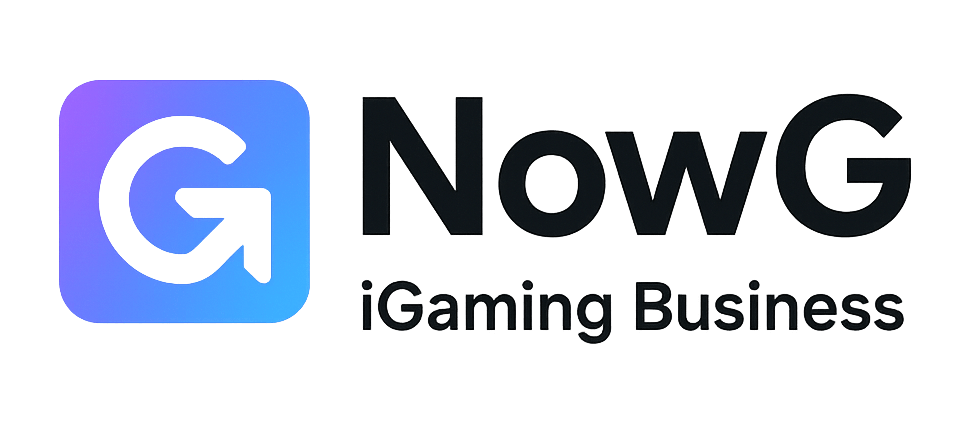Last Updated on October 29, 2025 by Caesar Fikson
Whether you’re the first affiliate hire at a new casino brand or inheriting a mature program across multiple GEOs, the affiliate manager role in iGaming is equal parts growth, risk, compliance, and relationships. You’re not just shipping creatives and paying invoices—you’re curating a performance ecosystem where regulations shift weekly, traffic quality oscillates daily, and bonus abuse can erase a month’s margin overnight. This guide distills real-world do’s and don’ts, practical playbooks, and templates you can lift and ship into your day-to-day. The focus is hands-on, operator-first, and 2026-ready.
What a great iGaming affiliate manager actually does
- Owns profitable scale: hits FTD, NGR, and ARPU targets while protecting margin and LTV.
- Guards compliance: locks in brand safety across GEOs, ad formats, and partner claims.
- Controls risk: identifies bonus abuse, syndicates, fake KYC, and payment loops early.
- Builds trust: communicates with affiliates like partners, not vendors.
- Optimizes the funnel: improves landing-page fit, offer tiers, and creative-message match by channel.
- Forecasts with data: turn cohort metrics into budget and promo decisions.
KPIs that matter (and how to read them)
Make your scorecard simple, visible, and agreed upon with Finance and Compliance. Tie traffic quality to commercial terms, not gut feel.
| KPI | Formula | Benchmark Notes | What to do if it drifts |
|---|---|---|---|
| FTD (First-Time Depositors) | New depositing players | Depends on GEO and vertical (casino vs. sportsbook) | Audit landing-path friction; check device and payment mix |
| CTD to FTD Rate | FTD / New registrations | 10%–35% typical in casino with clean flows | Fix KYC steps, payment errors, bonus clarity |
| ARPU (28/60/90) | NGR / active players | Varies by market | Segment by affiliate & cohort; tune bonus structure |
| Chargeback Rate | Disputed deposits / deposits | < 0.5% healthy, GEO-dependent | Throttle traffic; tighten payment rules and velocity checks |
| Bonus Cost Ratio | Bonus cost / GGR | Keep controllable & aligned to LTV | Adjust wagering, game contribution, cap max-bet |
| Player NGR Margin | (Stake – Wins – Bonus – Fees) | Stability indicates healthy model | Re-price CPA/RevShare; remove leaky promos |
Commercial models that actually work
Structure deals based on measurable risk and value; avoid “one size fits all.” Mix models per partner maturity, GEO, and traffic source.
| Model | When to use | Upside | Watch-outs |
|---|---|---|---|
| CPA | High-intent SEO/listing affiliates, trusted media buyers | Predictable CAC | Incent traffic, fake KYC, short LTV cohorts |
| RevShare | Content & community publishers, streamers | Aligned to LTV, long tail | Revenue volatility and negative carryover terms matter |
| Hybrid (CPA + RevShare) | Partners who scale but need flow | Balanced risk, faster ramp | Double-pay on poor quality if caps not set |
| rCPA / tiered CPA | Broad or new partners with unknown quality | Pay-on-quality thresholds | Disputes unless thresholds clear in writing |
| Tenancy + performance | Top portals, homepage takeovers | Guaranteed exposure and upside | Measure lift versus prior months |
Compliance-first onboarding flow
- Due diligence: legal entity, signatory, bank/crypto wallet ownership, traffic sources, GEOs, and prior operator references.
- Contract basics: ad claims policy, brand bidding rules, incentive traffic rules, negative carryover, sub-affiliate disclosure, and data processing addendum.
- Attribution plan: server-to-server postbacks, click deduplication, cookie windows by channel, and cross-device policy.
- Payout hygiene: payment corridors by GEO, chargeback liability clause, clawback mechanics, and reporting cadence (weekly raw + monthly verified).
The Definitive Do’s & Don’ts for Affiliate Managers (Casino & iGaming Edition)
Great affiliate programs aren’t built on lucky spikes; they’re built on discipline. In casino and iGaming, where margin, regulation, and reputation can turn on a dime, the difference between a durable program and a doomed one is the manager’s operating system—how you communicate, what you measure, what you incentivize, and where you draw the line.
Below is a practical, field-tested playbook. It expands on everyday behaviors that compound into growth—and the traps that quietly drain your P&L or risk your license.
Your Job in One Line
Make it easy for the right partners to send you the right traffic at the right price—consistently and compliantly—while protecting the downside.
Everything below ladders to that.
The Do’s: Habits That Compound
Over-communicate expectations from day one
Send every new partner a one-pager “playbook” before the first click. Spell out what’s allowed, what gets paused, how you pay, and who to ping. Include GEO coverage, approved funnels, prohibited claims, bonus rules, attribution windows, and a sample invoice. Clarity prevents “but no one told me” escalations later.
Starter checklist for your playbook
- GEOs & age gates, KYC/AML notes, and ad disclosure requirements per market
- Traffic sources allowed (content, PPC, email—what’s in/out)
- Brand bidding rules, direct linking rules, and negative keywords
- Bonus T&Cs summarized in plain language (plus full legal link)
- Invoice format, payment cycles, currencies, and thresholds
- Contacts by function (accounting, compliance, tracking, creative)
Tag everything so optimization takes days, not quarters
Require clean sub IDs per placement, language, device, and funnel step. Standardize the naming scheme and enforce it. Without granular tagging, you’re negotiating in the dark and burning test budgets.
Example sub ID schema
sub1=site_subdomain
sub2=placement_slot
sub3=device_OS
sub4=lang_geo
sub5=funnel_step (article|table|banner|review|landerA)
Pre-approve creatives and ban risky claims
No “risk-free,” no “guaranteed win,” no “instant cashout,” ever. Provide an exhaustively approved ad copy bank in multiple languages, with headlines, descriptions, CTAs, and promo images sized for each channel. Creatives are your first line of compliance; don’t outsource that risk to affiliates.
Pro tip: Keep a living “what good looks like” gallery and a “wall of shame” (redacted) to teach patterns.
Run monthly QBRs that are about cohorts, not anecdotes
Host a Quarterly Business Review (monthly in fast-moving GEOs). Review cohorts by acquisition week, not just by month. Tear down ARPU, NGR margin, chargebacks, bonus cost, and CTD. Decide commercial tweaks (caps, tiers, CPA floors) from data, not gut feel.
QBR agenda
- Traffic mix & placements (with sub ID performance)
- Cohort curves: FTD→30/60/90-day ARPU, churn, re-deposit %
- Bonus cost per FTD and bonus abuse flags
- Chargebacks, fraud, and KYC failure rates
- Tests & learnings (landers, promos, creatives)
- Next-month forecast, caps, and experiments
Reward quality with real lanes
Partners who deliver LTV should feel it. Offer faster approvals, priority payments, custom landers, higher caps, and exclusive promos. Publish what “gold tier” requires (e.g., 3 months of cohorts at ARPU > $X, fraud < Y%, compliant traffic). Make it a ladder—visible, earnable, repeatable.
Localize like revenue depends on it (because it does)
Banking options, lobby ordering, bonus copy, and CS languages must match the GEO. Bad localization crushes FTD-to-CTD rates. Translate by humans with gambling fluency, not raw machine output. Map local pay icons above the fold on landers. Align promo calendars to local sports seasons and holidays.
Track bonus abuse patterns weekly with Risk & Payments
Create a shared report of device fingerprints, IP clusters, velocity of deposits/cashouts, KYC mismatches, and referral loops. Meet weekly with Risk/Payments to update rules and share patterns back to affiliates (without doxxing). The best partners want abuse gone as much as you do.
Invest in high-converting landers and message-match
Send ad traffic to message-matched pages. The promo in the creative should be the headline on the lander; the payment logos should reflect the user’s GEO. Maintain 3–5 variants per channel and device, and keep a rolling A/B plan. Landers are the cheapest lever to lift FTD rate.
Be boringly reliable on payments
Nothing builds goodwill like paying on time and error-free. Automate reconciliation, validate invoices against your tracking, and communicate any delays before affiliates ask. Publish payment calendars, approve invoices quickly, and support multiple rails (SEPA, SWIFT, e-wallets).
Standardize the numbers and the narrative
Agree internally on definitions (FTD, NGR, ARPU, CTD window, bonus cost allocation) and use the same definitions externally. Include these in IOs and playbooks. When numbers mean the same thing for everyone, trust—and negotiations—get easier.
The Don’ts: Moves That Cost Margin (or Your License)
Don’t “trial” non-compliant ads because they “convert”
If it’s illegal or misleading, it’s off the table—no pilots, no small tests. Your brand and license carry the fine, not the affiliate. The cost of clawbacks, blacklisting, and regulator scrutiny dwarfs any short-term lift.
Don’t chase vanity volume
A spike in registrations with flat FTDs is not a success; it’s a signal. Investigate friction (KYC, pay steps), misaligned landers, or low-intent sources. Fix the funnel; don’t fund the fire with higher CPAs.
Don’t ship unlimited CPA without guardrails
Never approve uncapped CPA in new GEOs or with new partners. Set tier caps, GEO caps, traffic-source limits, and daily stop-loss in the IO. Review cohorts before lifting limits. Good partners will respect protective rails.
Don’t ignore sub-affiliates
Require disclosure and approval of sub-tiers. Sub-nets are where brand bidding, incent traffic, and toolbars hide. Keep a registry of approved subs, their placements, and their tracking. Pause the top until the bottom is clean.
Don’t set-and-forget rev share
Protect the downside with negative carryover, dormancy clauses, and sunset dates for underperforming deals. Review rev share after sports seasonality, game launches, or product changes. Incentives shape behavior; revisit them.
Don’t mix sportsbook and casino incentives without rules
Cross-selling is great—double-paying is not. Document attribution rules across verticals, carve-out windows, and tie-break logic. Make sure BI and finance implement the same rules your contract describes.
Don’t be vague about fraud and clawbacks
Ambiguous terms guarantee arguments. List exactly what triggers clawbacks, how chargebacks are netted, time windows, and evidence requirements. Then apply them consistently.
Don’t let automation become a black box
Auto-approvals and AI scoring help at scale, but you still need human spot-checks. Review edge cases, new GEOs, and spike behaviors manually each week. Machines don’t go to jail—people do.
SOPs You Can Lift and Run
Sample onboarding email (copy & adapt)
Subject: Welcome to [Brand] — Your Affiliate Playbook & First Steps
Hi [Name],
Great to have you on board. Attached is your one-pager playbook covering GEOs, allowed traffic, creative guidelines, and payments.Your tracking links: [links]
Creative folder: [drive link] (EN/DE/ES, all sizes)
Invoicing: Net-15, thresholds €500 / $500. Template inside the playbook.
Best practices: Use sub IDs per placement/device/language; send your top 3 placements for pre-approval; start with Lander A (EN) or Lander B (DE).We’ll schedule a 20-minute kickoff to align on targets and caps.
Cheers,
[You] — Affiliate Manager
[Email • Telegram/Skype • Finance alias • Compliance alias]
IO clauses that save headaches
- Caps & stop-loss. “Daily cap: 30 FTDs per GEO; stop-loss triggers pause if FTD→CTD < X% for 3 consecutive days.”
- Creative compliance. “Only materials from [folder link] or pre-approved in writing may be used.”
- Brand bidding. “No bidding on [brand/typos], no direct-to-site; add negatives: [list]. Violations forfeit commissions for that period.”
- Attribution. “30-day click, last non-direct click, cross-device via user ID; sportsbook/casino tie-break: [rules].”
- Fraud & clawbacks. “Chargebacks, bonus abuse, self-referrals, and KYC failures netted from payable. Evidence shared within 10 business days.”
Monthly QBR template (short form)
- What changed: placements, creatives, GEO mix
- Cohorts: Week-by-week ARPU 7/30/60/90; bonus cost; re-deposit rate
- Funnel: Click→Reg, Reg→KYC, KYC→FTD, FTD→CTD; by device & lander
- Risk: chargebacks, device/IP clusters, sub-aff updates
- Actions: caps +/-, lander tests, creative swaps, payment tier, next promo
Compliance checklist by market (example fields)
- Age gate copy and placement
- Required responsible gaming links/logos
- Bonus disclosure format & min font size
- Banned words/claims list by regulator
- Tracking & consent (cookies, ad disclosures)
- Local payment logos verified
Metrics That Matter (and How to Read Them)
- FTD rate: From reg to first deposit. Low = friction or mis-match on landers.
- CTD rate: From FTD to completing turnover/wagering. Low = promo mis-set or poor lobby relevance.
- ARPU by cohort: Your truth serum. Use acquisition week cohorts to compare apples to apples.
- Bonus cost per FTD: If it drifts up without ARPU lift, your incentive is wrong (or abused).
- Chargeback & KYC fail %: Early warning for bad subs or incent sources.
- Time to first re-deposit: Healthy stickiness indicator; ties to CRM cadence and game mix.
Anchor negotiations to these, not just raw sign-ups.
Partner Experience = Competitive Advantage
Affiliates compare programs by speed, clarity, and fairness. Win on:
- Speed: fast approvals, fast answers, fast payments.
- Clarity: no fuzzy rules, no surprise clawbacks, no moving targets.
- Fairness: reward quality, share insights, fix your funnel before cutting CPA.
Programs with the same headline CPA feel very different to work with. Be the one that feels easy.
A Simple Quarterly Rhythm
Week 1: Clean the house—archive old landers, refresh creative banks, audit sub IDs.
Week 2: GEO deep-dives—localize promos, adjust banking, align CRM.
Week 3: Partner growth—promote two partners into better lanes; onboard two new quality partners.
Week 4: Risk focus—pattern review with Payments; update blocklists and IO language.
Rinse, iterate, compound.
Offer and promo mechanics that protect LTV
Bonuses drive click-through, but structure drives profitability. Keep mechanics transparent and LTV-positive.
| Mechanic | Player value | Operator protection | Affiliate angle |
|---|---|---|---|
| Match bonus with 30–35x | Predictable, achievable | Game contribution tables, max bet, expiry | Clear talking points and honest expectations |
| Free spins drip (daily) | Encourages return sessions | Expiry windows, capped winnings | More touchpoints for email/SMS upsell |
| Cashback on net losses | Feels “fair,” low toxicity | Low wagering on cashback | Great for live casino communities |
| Leaderboard with real value | Community energy | Transparent scoring, anti-multi-accounting | Streamers & forums love shareable scores |
Fraud, abuse, and how to stay ahead
Abuse evolves. Your defenses must, too. Coordinate weekly with Risk, Payments, and CS.
- KYC mismatches: name-card mismatch, disposable emails, and VPN anomalies. Action: velocity rules, device fingerprinting, and manual checks on high CPA spikes.
- Bonus cycling: deposit exactly the min/max-bet path through high-volatility slots, and cash out on the first big win. Action: staged wagering unlocks, sensible max-bet limits, and contribution tables.
- Brand bidding: affiliates outbidding you on your brand keywords. Action: explicit policy, automated PPC monitoring, clawback clause.
- Incent traffic disguised: “guides” that pay users to register. Action: require screenshots of placements, monitor unbranded sudden spikes.
- Chargeback farms: small deposits across many accounts, disputed en masse. Action: BIN-level risk rules, deposit-cashout velocity, and educating agents to spot patterns.
Attribution and tracking in a cookieless, multi-device world
By 2026, over half of new players will touch at least two devices pre-FTD. Rely less on client-side cookies and more on server-side truth.
- Server-to-server postbacks: make them your default, not an option. Validate every FTD with a server event.
- Click deduplication: last-click within channel, last-paid-click across channels. Put the rule in the IO.
- Cross-device logic: match via login/email hash where allowed. Be transparent about rules with top partners.
- Data contracts: hash-only personal data in reports. Align with privacy laws per GEO.
Creative operations that scale
- Creative library: host a versioned portal with ad copy, banners, logos, and compliance notes per GEO and language.
- Message-match: ads promise the exact bonus on the landing page. No surprises at registration.
- Performance feedback loop: monthly report of CTR, CVR, and FTD by creative ID so partners iterate with facts.
- Seasonality calendar: sports finals, holidays, new game drops—ship themed assets 2–3 weeks early.
Relationship playbook: how to be the partner every affiliate wants
Reputation compounds. Small gestures pay back in prime placements and patient partners when a month goes sideways.
- Weekly pulse: short email with top promos, new games, and the “what’s working now” snapshot.
- Faster answers: under 24 hours on commercial queries, under 48 hours on disputes.
- Align on goals: share your GEO and product roadmap so affiliates can plan content and placements.
- Be fair on disputes: show your math, share screenshots, and offer test budgets to prove a point.
Global GEO notes you cannot ignore
Every market has its own rulebook. Align copy, payment options, and promos with local expectations and law.
- Tier-1 regulated: strict ad claims, RG disclosures, deposit limits, and complaint channels. Expect higher CAC but stronger LTV.
- Emerging markets: payment rails are king. Show local methods prominently. Vet affiliates for incentive tactics.
- Language nuance: small translation errors break trust. Use native reviewers for the headline and CTA.
Onboarding template you can copy
Subject: Welcome to [Brand] Affiliates—Your Next Steps
Hi [Name],
Great to have you with us. Below are your essentials:
- Tracking: Your unique links and S2S postback docs
- Creatives: Library by GEO and language
- Compliance: ad-claims policy, brand-bidding rules
- Payments: schedule, methods, and invoice template
- Contacts: your AM, risk escalation, 24/7 support
Kickoff checklist: confirm traffic sources, top GEOs, and your first placements. We’ll review performance in 7 days and shape commercial terms from data.
Cheers,
[Your Name], Affiliate Manager
Monthly QBR agenda that keeps everyone honest
- Performance by cohort (weeks since FTD), device, and GEO
- Bonus cost and chargebacks trends
- Top converting landers and creatives
- Commercial adjustments (caps, floors, hybrid tweaks)
- Roadmap: promos, new games, product updates
Tech stack essentials
You don’t need thirty tools—just a reliable spine.
- Affiliate platform: accurate tracking, robust S2S postbacks, granular sub IDs, fraud flags, and sane reporting.
- BI layer: cohorting, ARPU by acquisition week, chargeback overlays.
- Creative DAM: one source of truth for assets and copy by GEO.
- Comms: CRM for partner notes, statuses, and renewal alerts.
Payment rules that prevent headaches
- Close-of-month timeline: raw report day 1–3, dispute window to day 7, final validated report and invoice day 8–10, payout net-15.
- Method: bank wires for large sums, e-wallets for speed. Match payee name to contract.
- Clawbacks: define windows for chargebacks and fraud; share event-level evidence when used.
Team structure as you scale
- AMs by GEO: language-native, own local networks and compliance nuance.
- Enablement: creative ops, landers, UTM governance.
- Partner Ops: payments, contracts, and data QA.
- Risk liaison: weekly fraud huddles and rules tuning.
Checklist: weekly rhythm
- Run fraud and brand-bidding reports
- Ship updated creatives and promos
- Audit top 20 partners’ placements
- Review cohorts and ARPU shifts
- Clear the inbox and pay approved invoices
Final thoughts
Great affiliate managers in casino, gambling, and iGaming don’t chase volume—they design it. They obsess over funnels, set clear commercial guardrails, and keep partners in the loop. They say “no” quickly to what risks the license and “yes” loudly to what compounds LTV. Do that consistently and you’ll earn the only KPI that really matters: partners who put your brand first on their pages because you’re predictable, data-driven, and fair. Affiliate management in iGaming isn’t about finding the magic partner or the one “killer” deal. It’s about eliminating uncertainty for good actors and erecting friction for bad ones. Do the boring things right—every month—and you’ll outlast and outperform flashier programs.
Be crystal clear. Be data-driven. Be uncompromising on compliance. Be relentlessly helpful to partners who earn it.
That’s how durable programs grow.
FAQs
What’s the best commission model for new casino affiliates?
Start with tiered CPA caps or a small hybrid (e.g., modest CPA + low RevShare) while you validate quality. Move high-quality partners to higher tiers or pure RevShare once cohorts prove LTV.
How do I stop brand bidding without killing relationships?
Put explicit rules in the IO, set automated brand-term monitoring, and escalate in steps: warning with evidence, temporary pause, then clawback if repeated. Offer non-brand keyword lists and higher tiers for compliance.
What reports should I send affiliates each month?
Cohort ARPU (28/60/90), FTD trend, chargebacks, top-performing creatives and landers, and upcoming promos. Keep it consistent so partners can plan content and budgets.
How do I detect incentive or fake traffic early?
Watch for spikes of registrations with flat FTDs, same-device or same-IP clusters, tiny deposit sizes at high velocity, and identical sub IDs. Pause, request placement proofs, and enforce your policy.
How strict should I be on creatives and claims?
Very. Ban “guaranteed,” “risk-free,” or any implication of certain profit. Provide a pre-approved copy per GEO in your library and require written approval for any custom edits.
Reminder: Always comply with local laws and licensing conditions, including responsible gambling messaging, age gating, and advertising standards in the markets you target.




